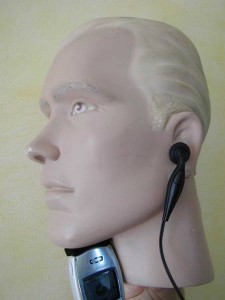There are many rumors about the future innovation of cell phones. Many of them are just a dream while some of them are being tested and put in use. Silent Speech Interface is one these; this

technology enables speech communication without using the sounds made when people vocalize their speech sounds. On the other hand, Silent Speech Interface allows people to communicate with each other by using only a whispering sound or even soundless speech. This technology was developed by NASA for astronauts who needed to communicate but whose voices couldn’t be made out due to background noise.
The Silent Speech Interface concept has been created using ultrasound and optical camera input of tongue and lip movements(1). The detection of speech movements by electromyography of speech articulation muscles and the larynx is another technique(2). Another source of information is the vocal tract resonance signals that get transmitted through bone conduction called non-audible murmurs(3). By applying the above mentioned concepts and then putting them into cell phone, then, it is non-necessary to worry about cell phone communication quality in a sound restricted place and also in a place where there is a lot of back ground noise. Moreover, a Silent Speech Interface is also perfect to use in a person who has permanently lost their voice.
In the stressful and chaotic world, technologies always come in handy. Silent Speech Interface is one of interesting future technologies for cell phone that can be consider as a useful tool which offers customers a broad range of communication techniques in different situations. With this technology inside a cell phone, everyone can speak when they want regardless of where they are (e.g. meeting room, night club, construction site, people who live near airport or noisy place, church, classroom, etc. ). Furthermore, the voice-disabled person need use only tongue and lip movements and then let the Silent Speech Interface technology generate the voice for them so that they can normally communicate with other people via cell phone.
(1) Hueber T, Benaroya E-L, Chollet G, Denby B, Dreyfus G, Stone M. (2010). Development of a silent speech interface driven by ultrasound and optical images of the tongue and lips. Speech Communication, 52 288–300.
(2) Jorgensen C, Dusan S. (2010). Speech interfaces based upon surface electromyography. Speech Communication, 52: 354–366.
(3) Hirahara T, Otani M, Shimizu S, Toda T, Nakamura K, Nakajima Y, Shikano K. (2010). Silent-speech enhancement using body-conducted vocal-tract resonance signals. Speech Communication, 52:301–313